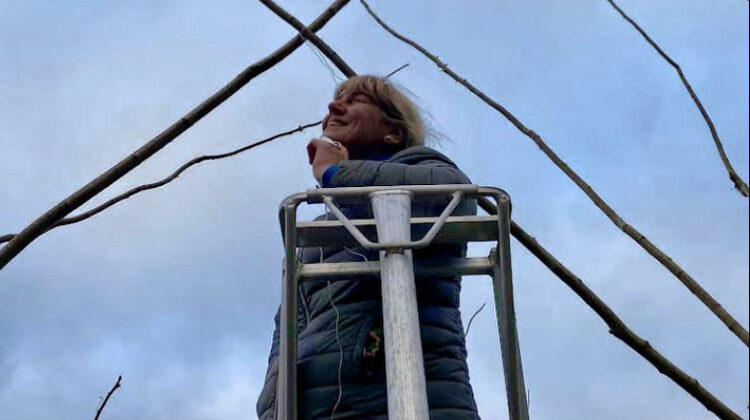
In her first column for Folk Features, Suffolk-based artist Grace Adam, who works at Chelsea College of Arts and the Royal Academy of Arts, appreciates the tulips in her garden – and the still life paintings of the 17th Century Dutch Masters
Spring has arrived. Colour is back: blousy lime green verges, delicate purple carpets of bluebells in the woods, and striking dramatic colour-soaked tulips in my garden. I love them for their simplicity of form and strong sinuous lines (I’m excluding strange parrot ones with extremely frilly contours). I’m not alone. Painters have recorded tulips for centuries – from their brilliant colours to their falling petals, most famously in 17th Century Dutch still life paintings.
Painters have been drawn to these flowers not only for their beauty, but also as symbols of status. Flemish and Dutch painters revelled in these newly encountered, fabulous flowers.
Originally native to the Central Asian mountains, treasured and traded in the courts of Persia and Turkey, they were nurtured in the gardens of Baghdad and Isfahan.
In 1634, an exotic import of tulip bulbs arrived in the Netherlands from Turkey. Tulip Fever hit. These coveted luxury items were collected, studied and traded. The most sublime and odd paintings were created.
I thought I’d share one of my favourites:

(Flemish, 1573–1621)
STILL LIFE OF FOUR TULIPS IN A WAN-LI PORCELAIN VASE C 1610
A still life can be a celebration of material pleasures, a reflection on the brevity of human life or a warning to be good! Sometimes it is a formal exercise and a way to experiment. Think of the Cubists knocking them about and seeing them from all angles.
Ambrosius Bossschaert was born in Antwerp in 1573 and specialized in painting still life with flowers. His three sons all became flower painters. He made a very good living in the expanding Dutch art market.
This beautiful painting shows a vase of just four tulips which are just about to be over. The petals are almost iridescent; each magnificent bloom is given almost equal status, and an uncanny feel as the artist allocates the same focus to each-not the way the human eye sees.
A dark interior offers further drama. Bosschaert painted on copper rather than canvas to allow him to apply tiny intricate smooth brush strokes and layers of glazes. Painting in oils, as we know it, was a Dutch breakthrough.
The four protagonists are almost too large for their frame, but the painter is careful not to let us forget that all things end. Note the insect approaching on the right, and the shell of a snail on the left.
The vase of blue and white porcelain also points to the wealth and knowledge of his buying audience. From the Ming dynasty, it was imported into the Dutch Republic where these things fetched enormous prices at auction. Interestingly, his brother-in-law, the artist Balthasar Van der Ast, painted a picture featuring a very similar vase. It’s unlikely the two of them could have afforded such expensive objects, so they may have seen and sketched this at a wealthy patron’s home. Equally, Ambrosius Bosschaert probably wouldn’t have owned these tulips, so would have made careful drawings and notes for his painting.
As a young artist, he visited the pioneering botanist Carolus Clusius, who established an important botanical garden at the University of Leiden during the 1590s. Clusius explored the tulip’s possible medicinal properties, even preserving bulbs in sugar to eat for pleasure!
Anyway, if your tulips are now fading, there are everlasting ones to be enjoyed in this wonderful Dutch still life. Yes, they were about status, but for the painters? It was about beauty.
Visit Grace Adam Artist. Forthcoming workshops include: Still Life Drawing and Painting, on May 13, 10am-3pm; and Figure Drawing on June 3, 10am-3pm. All materials provided. For more information, visit W O R K S H O P S + TALKS.









Leave a Reply